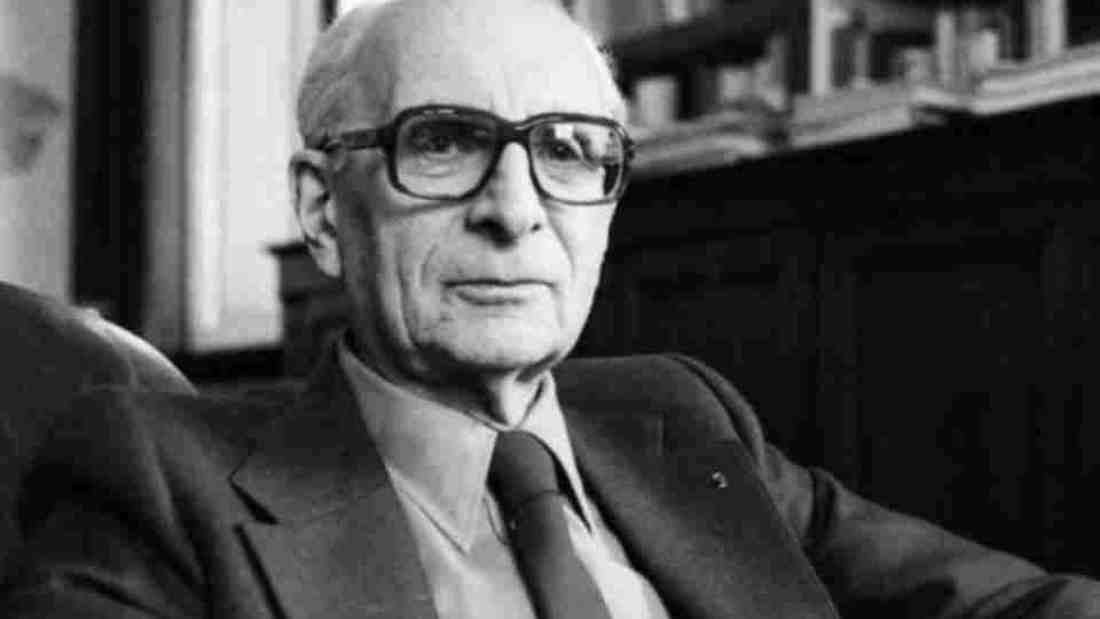Claude Lévi-Strauss was a prominent French anthropologist who is widely regarded as one of the most influential thinkers of the 20th century. He is best known for developing the theory of structuralism, which revolutionized the field of anthropology and had a profound impact on other social sciences.
Structuralism differs from other anthropological theories in that it emphasizes the underlying patterns and structures that shape human behaviour and culture, rather than focusing on individual actions or historical events. This approach allowed Lévi-Strauss to develop new ways of understanding cultural phenomena, such as myths, rituals, and kinship systems.
In this article, we will explore Lévi-Strauss’s contributions to anthropology through his development of structuralism and examine its influence on subsequent generations of anthropologists.
Historical Context
The intellectual climate of France in the mid-twentieth century was one of great ferment and change, with many thinkers seeking new ways to understand human behavior and culture. It was against this backdrop that Claude Lévi-Strauss developed his theory of structuralism.
One major influence on Lévi-Strauss’s thinking was the work of linguist Ferdinand de Saussure, who argued that language is a system of signs governed by underlying rules and structures. This idea resonated with Lévi-Strauss, who saw parallels between linguistic systems and cultural systems.
Another important influence was the rise of existentialism, which emphasized individual freedom and choice. Lévi-Strauss rejected this view, arguing instead that human behavior is shaped by unconscious patterns and structures that are largely beyond our control.
Lévi-Strauss was also influenced by anthropology’s colonial past, as he sought to develop a theory that could account for cultural diversity without resorting to Eurocentric assumptions or stereotypes.
It was this combination of intellectual influences that led Lévi-Strauss to develop his theory of structuralism, which aimed to uncover the underlying structures and patterns that shape human culture across time and space.
The Basic Tenets of Structuralism
The basic tenets of structuralism can be summarized as follows:
The belief that underlying structures shape human behavior and culture. Structuralists view society and culture as systems of interconnected elements that work together to create meaning.
The focus on binary oppositions as a fundamental aspect of human thought. Structuralists believe that people understand the world through a series of binary oppositions, such as good vs. evil or male vs. female.
The use of language and signs to create meaning. Structuralists believe that language is a system of signs that we use to communicate with each other, and that these signs are governed by underlying rules and structures.
The importance of context in shaping meaning. Structuralists argue that meaning is not inherent in objects or ideas, but rather emerges from the context in which they are situated.
The use of analysis to uncover underlying structures and patterns. Structuralists employ analytical methods to identify the underlying structures and patterns that shape human behaviour and culture.
Overall, structuralism is a theoretical framework that seeks to understand how humans make sense of the world around them by analysing the underlying structures and patterns that shape their beliefs, values, and behaviours.
Key Concepts of Structuralism
Structuralism is a theory that emphasizes the underlying structures and patterns that shape human behaviour and culture. There are several key concepts associated with this theory, which are used by structuralists to analyse cultures and societies by identifying the underlying structures and patterns that shape them.
By analysing binary oppositions, myths, and bricolage within a particular culture or society, structuralists seek to uncover the underlying logic that governs its practices and beliefs.
Binary Oppositions
Binary oppositions are a fundamental concept in structuralism, and they refer to the pairing of two concepts that are diametrically opposed to each other. These oppositions can be found in many different domains of social life, from language and literature to art and architecture. They are believed to be foundational to human thought and culture, shaping our understanding of the world around us.
In many cases, binary oppositions are deeply ingrained in cultural practices and beliefs. For example, the opposition between good and evil is a common theme in religious traditions around the world. This opposition reflects a fundamental tension between two opposing forces or principles that underlie much of human experience.

Similarly, the binary opposition between male and female is an important concept in many cultures. This dichotomy reflects a deep-seated belief in the differences between men and women, which shapes everything from gender roles to social norms.
Structuralists argue that these binary oppositions are not arbitrary or accidental, but rather reflect deeper patterns of thought and behaviour that shape human culture across time and space. By analysing these oppositions within a particular culture or society, structuralists seek to uncover the underlying logic that governs its practices and beliefs.
Myth
Myth is a critical concept in structuralism, referring to stories or narratives that express fundamental cultural values and beliefs. Myths are often used to explain the origins of the world or to provide moral guidance for individuals within a society. Structuralists analyse myths by identifying the underlying binary oppositions and structures that they embody.
For example, many creation myths feature a binary opposition between chaos and order, with the creation of the world representing a triumph of order over chaos. This opposition reflects a fundamental tension between two opposing forces or principles that is common across many cultures.
Similarly, many myths feature an opposition between good and evil, reflecting deeply held cultural values about morality and ethics. By analyzing these mythic structures, structuralists seek to uncover the underlying patterns of thought and behavior that shape human culture.
Structuralists believed that folk stories, religious stories, and fairy tales were a good way to identify universal human structures. These stories showed how people thought in terms of binary oppositions. For example, in the story of Cinderella, some of the contrasts include good versus evil, pretty versus ugly, clean versus dirty, etc. This focus led to the use of a particular methodology called hermeneutics, which is the study of how to interpret the meaning of written works.
Bricolage
Bricolage refers to the creative recombination of existing cultural elements into new forms. This term was first used by French anthropologist Claude Lévi-Strauss, who argued that all cultures engage in bricolage to some extent.
According to Lévi-Strauss, bricolage involves taking ideas, practices, and objects from different contexts and recombining them into new configurations. This process can involve borrowing elements from other cultures or from the past, as well as creating entirely new combinations of existing elements.
Bricolage is a key mechanism for cultural change and innovation. By combining existing elements in new ways, individuals and societies can create novel ideas and practices that reflect changing social needs and values.
For example, many contemporary art forms engage in bricolage by drawing on diverse cultural influences to create something new. Hip-hop music, for instance, incorporates elements of African American culture, Caribbean music, and Latin rhythms to create a unique sound that reflects the experiences of urban youth.
Similarly, many fashion designers engage in bricolage by combining different fabrics, styles, and patterns to create innovative clothing designs. This process often involves drawing inspiration from historical fashion trends or other cultural sources.
Overall, bricolage is an important concept in understanding how cultures evolve over time. By creatively recombining existing cultural elements into new forms, individuals and societies can adapt to changing circumstances and express their own unique identities.
Criticism of Structuralism
Structuralism, as a theoretical framework, has faced several criticisms over the years. Two of the most common criticisms are accusations of Eurocentrism and oversimplification.
Eurocentrism refers to the idea that structuralism is biased towards Western cultures and perspectives. Critics argue that structuralists ignore or downplay the importance of non-Western cultural practices and beliefs, leading to an incomplete understanding of human behavior and culture.
Another criticism leveled against structuralism is oversimplification. Critics argue that by reducing complex cultural phenomena to underlying structures and patterns, structuralists risk oversimplifying or even distorting the complexities of human behavior and culture.
Both of these criticisms have some validity. Structuralism does tend to focus on Western cultural practices and beliefs, which can lead to an incomplete understanding of non-Western cultures. Additionally, the reductionist approach taken by structuralists can sometimes result in an oversimplified view of complex cultural phenomena.
However, it is important to note that these criticisms do not necessarily invalidate structuralism as a theoretical framework. While it is true that structuralism has limitations, it has also made significant contributions to our understanding of human behavior and culture. For example, the focus on binary oppositions has been influential in fields such as linguistics and anthropology.
Furthermore, many contemporary theories build upon or integrate aspects of structuralism while addressing some of its limitations. Post-structuralist theories, for instance, critique the essentialist assumptions underlying structuralist thought while still acknowledging the importance of analyzing underlying structures and patterns.
Conclusion
In conclusion, Claude Lévi-Strauss’s work on structuralism has had a profound impact on anthropology as a discipline. His focus on binary oppositions and underlying structures helped to establish anthropology as a science of pattern recognition, inspiring subsequent generations of anthropologists to think critically about the ways that humans create meaning.
While there are valid criticisms of structuralism, these critiques should not discount its contributions to our understanding of human behaviour and culture. Instead, we should continue to engage with this theoretical framework critically while exploring alternative perspectives that address its limitations, building upon or diverging from Lévi-Strauss’s work in order to gain deeper insights into the complexities of human culture and society.
For Further Reading
What are the key components of the anthropological perspective?
“Cultural values are a web of linked concepts, fixed in time and space.”
Evans-Pritchard and the Religion of the Nuer Tribe
How do economic and residence practices impact women’s status and power?
What are the different marriage wealth-exchange practices?
Claude Lévi-Strauss’s Structuralism and its Influence on Anthropological Thought
Clifford Geertz and the Thick Description of the Balinese Cockfight
Bronislaw Malinowski, the Trobriand people and the Kula
Dance as Ritual – an anthropological perspective
How Residence Customs After Marriage Vary Around the World
Compare the operations and implications of Bridewealth and Dowry
The impact of Assisted Reproductive Technologies (ARTs) on Anthropology
“The two-gender system is neither innate nor universal” (Towle and Morgan 2006)
The 4 Main Branches of Anthropology – Unlocking the Secrets of Human Diversity
Anthropology vs Sociology – Which Lens to Use When Studying Humanity?
Disclosure: Please note that some of the links in this post are affiliate links. When you use one of my affiliate links, the company compensates me. At no additional cost to you, I’ll earn a commission, which helps me run this blog and keep my in-depth content free of charge for all my readers.


